
GRAEFES ARCHIVE FOR CLINICAL AND EXPERIMENTAL OPHTHALMOLOGY
Scope & Guideline
Exploring Innovations in Ocular Health
Introduction
Aims and Scopes
- Clinical Ophthalmology:
The journal publishes research on various clinical aspects of ophthalmology, including surgical techniques, treatment efficacy, and patient management strategies. - Experimental Research:
It includes experimental studies that investigate the pathophysiology of eye diseases, novel therapeutic approaches, and the development of new technologies. - Technological Innovations:
The journal emphasizes the role of cutting-edge technologies in ophthalmology, such as optical coherence tomography, artificial intelligence in diagnostics, and advanced surgical instruments. - Public Health and Epidemiology:
Research concerning the epidemiology of ocular diseases, public health strategies for eye care, and the socioeconomic impact of visual impairments is also a key focus. - Interdisciplinary Approaches:
The journal promotes interdisciplinary research that combines ophthalmology with other fields such as genetics, pharmacology, and immunology to enhance understanding and treatment of ocular disorders.
Trending and Emerging
- Artificial Intelligence and Machine Learning:
The integration of AI and machine learning in ophthalmology for diagnostics and treatment prediction is rapidly growing, demonstrating the potential to enhance clinical decision-making. - Telemedicine and Remote Monitoring:
The COVID-19 pandemic accelerated the adoption of telemedicine in ophthalmology, leading to increased research on remote monitoring and virtual care solutions for patients. - Personalized Medicine:
There is a growing emphasis on personalized treatment approaches, particularly in managing complex conditions like age-related macular degeneration and diabetic retinopathy, driven by genetic and phenotypic patient data. - Chronic Ocular Diseases Management:
Research focusing on the management of chronic conditions such as glaucoma and diabetic retinopathy, including long-term treatment outcomes and patient adherence, is increasingly prevalent. - Microvascular Changes in Ocular Diseases:
Emerging interest in the role of microvascular changes and their implications in various ocular diseases highlights a shift towards understanding the systemic connections of eye health.
Declining or Waning
- Traditional Surgical Techniques:
Research on traditional surgical methods is becoming less frequent as new technologies and minimally invasive techniques gain traction, reflecting a shift towards innovative approaches. - Basic Science Studies:
There has been a noticeable decrease in purely basic science studies that do not translate into clinical applications, as the journal prioritizes research with direct clinical relevance. - Pharmacological Studies:
The frequency of studies focusing solely on pharmacological interventions without considering comprehensive treatment regimens or patient-centered outcomes has waned.
Similar Journals

EUROPEAN JOURNAL OF OPHTHALMOLOGY
Elevating Knowledge in Ophthalmology for Better OutcomesThe EUROPEAN JOURNAL OF OPHTHALMOLOGY, published by SAGE PUBLICATIONS LTD, is a leading international journal in the field of ophthalmology, dedicated to advancing the understanding and treatment of ocular diseases and disorders. With an ISSN of 1120-6721 and an E-ISSN of 1724-6016, the journal aims to provide a platform for innovative research, critical reviews, and comprehensive studies that span the diverse aspects of the discipline. As part of its commitment to disseminating high-quality research, the journal is indexed in Scopus, achieving an impressive rank of #47 out of 137 in the Medicine - Ophthalmology category, indicating its strong impact within the academic community. With a current impact factor that places it in the Q2 quartile for both Medicine (miscellaneous) and Ophthalmology as of 2023, it offers researchers and practitioners access to important findings and developments in eye health. The journal's converged years from 1991 to 2024 exemplify its longstanding commitment to the field, making it an essential resource for anyone looking to stay at the forefront of ophthalmological research.
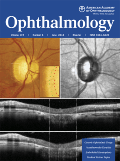
OPHTHALMOLOGY
Advancing ocular health through groundbreaking research.OPHTHALMOLOGY is a leading journal in the field of ocular health, widely recognized for its contributions to advancing the understanding and treatment of ophthalmic conditions. Published by ELSEVIER SCIENCE INC in the United States, it has earned a prestigious place within the academic community, boasting a remarkable Q1 ranking in the ophthalmology category for 2023, along with an impressive Scopus rank of #2 out of 137, placing it in the 98th percentile. With a strong publication history dating back to 1958, OPHTHALMOLOGY encompasses high-quality research articles, reviews, and clinical studies that address critical issues in the field. Researchers, professionals, and students alike can access its comprehensive research through traditional subscription options, fostering an ongoing dialogue among experts. Whether you are seeking the latest treatments, understanding complex ocular diseases, or looking to advance your knowledge, OPHTHALMOLOGY remains an essential resource for cutting-edge research and insights.
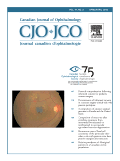
CANADIAN JOURNAL OF OPHTHALMOLOGY-JOURNAL CANADIEN D OPHTALMOLOGIE
Elevating standards in clinical ophthalmology.Canadian Journal of Ophthalmology - Journal Canadien d'Ophtalmologie, published by the prestigious Canadian Ophthalmological Society, serves as a leading platform for disseminating cutting-edge research in the field of ophthalmology. With an ISSN of 0008-4182 and E-ISSN 1715-3360, the journal boasts a commendable impact factor and maintains a strong presence within the medicine and ophthalmology categories, ranking in the Q2 quartile. This journal not only provides significant insights into clinical practices and advancements but also contributes to the understanding of ocular health issues facing contemporary society. Since its inception in 1966, it has published high-quality research, making substantial strides in both practical and theoretical aspects of ophthalmology until 2024. Although it is not an open-access journal, it establishes a vital resource for researchers, professionals, and students alike, fostering an informed community dedicated to improving vision care.
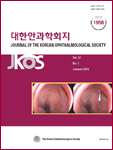
Journal of the Korean Ophthalmological Society
Connecting Scholars to Transform Vision ScienceThe Journal of the Korean Ophthalmological Society, with ISSN 0378-6471 and E-ISSN 2092-9374, is a pivotal resource in the field of ophthalmology, published by the esteemed Korean Ophthalmological Society. Based in South Korea, this journal is committed to advancing knowledge in ophthalmology through the dissemination of research that spans both clinical and experimental studies. Despite its current Q4 ranking in the 2023 Ophthalmology category, it serves as a crucial platform for emerging scholars, practitioners, and students seeking to contribute to and learn from the latest developments in eye care. While the journal does not currently offer open access, it is dedicated to fostering scientific dialogue and innovation within the community. With convergence years from 2018 to 2024, the journal's focus on contemporary issues in ophthalmology positions it as a relevant and timely source of information, critical for those engaged in this dynamic field. For further inquiries, the journal can be contacted at their address in Seoul, South Korea: SKY 1004 BLDG 701, 50-1 Jungnim-ro, Jung-gu, 04508.

Translational Vision Science & Technology
Pioneering Open Access Research for Visionary SolutionsTranslational Vision Science & Technology is a premier open access journal dedicated to the advancement of the field of ophthalmology and biomedical engineering. Published by the Association for Research in Vision and Ophthalmology, Inc., this journal has established itself as a leading source of high-quality research since its inception in 2013, achieving a remarkable impact factor reflective of its influential contribution to the field. With an impressive ranking of #21 in Ophthalmology and #120 in Biomedical Engineering within the Scopus database, it sits within the prestigious Q1 quartile for both categories as of 2023, further validating its significance. The journal's scope encompasses a wide variety of topics focused on the intersection of ophthalmological science and technological innovation, welcoming contributions that promote the understanding and treatment of visual disorders. Available as an Open Access publication since 2016, it ensures that cutting-edge research is freely accessible to researchers, practitioners, and students worldwide, facilitating the rapid dissemination of knowledge essential for the advancement of vision science.
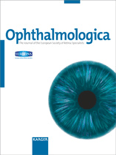
OPHTHALMOLOGICA
Exploring the Depths of Ocular Health and MedicineOPHTHALMOLOGICA is a prestigious journal published by KARGER, dedicated to the dynamic field of ophthalmology and its interdisciplinary connections with medicine and sensory systems. With a rich history spanning over a century since its inception in 1899, this journal is esteemed for its high-quality research and impactful contributions, maintaining an impressive Q1 quartile ranking in both ophthalmology and miscellaneous medicine as of 2023, alongside a notable Q2 status in sensory systems. The journal's influence is reinforced by its Scopus rankings, where it ranks 26th out of 137 in ophthalmology, showcasing a strong percentile position of 81. Based in Basel, Switzerland, OPHTHALMOLOGICA serves as an essential platform for researchers, professionals, and students, providing essential insights, reviews, and studies that push the boundaries of knowledge in the vision sciences. Although it does not currently offer open access, its contributions are critical for those pursuing advancements in ocular health and related disciplines.
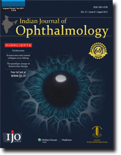
INDIAN JOURNAL OF OPHTHALMOLOGY
Exploring New Horizons in Eye Care and ResearchThe Indian Journal of Ophthalmology is a prestigious, peer-reviewed publication dedicated to advancing the field of ophthalmology. Published by Wolters Kluwer Medknow Publications, this journal plays a vital role in disseminating high-quality research and clinical insights since its inception in 1946. With an impact factor placing it in the Q2 category in Ophthalmology for 2023, it ranks #42 out of 137 in Scopus, reflecting its influence and reliability in the medical community. As an Open Access journal since 2005, it ensures that impactful research is accessible to a global audience, fostering innovation and knowledge sharing among researchers, healthcare professionals, and students alike. The journal's commitment to publishing cutting-edge studies, comprehensive reviews, and clinical guidelines makes it an essential resource for those navigating the rapidly evolving landscape of eye care and ophthalmology.
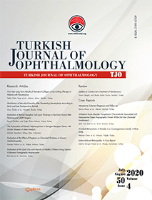
Turk Oftalmoloji Dergisi-Turkish Journal of Ophthalmology
Illuminating Innovations in OphthalmologyTurk Oftalmoloji Dergisi - Turkish Journal of Ophthalmology is a premier peer-reviewed publication dedicated to the field of ophthalmology, published by GALENOS PUBL HOUSE. Since its inception in 1997, this Open Access journal has championed the dissemination of high-quality research, fostering an inclusive environment for sharing knowledge and advancements in eye health. With an ISSN of 1300-0659 and an E-ISSN of 2147-2661, the journal serves as a vital resource for researchers, clinicians, and students interested in the latest findings and innovations in ophthalmic sciences. Although its coverage in Scopus has been discontinued since 2017, the journal has garnered a significant rank of 80 out of 114 in the field of Medicine – Ophthalmology, highlighting its relevance and impact within the discipline. Operating out of Istanbul, Turkey, the Turkish Journal of Ophthalmology continues to be a crucial platform for ophthalmologists and researchers to publish their work and advance the understanding of ocular health.
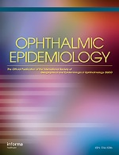
OPHTHALMIC EPIDEMIOLOGY
Illuminating Insights in Ocular EpidemiologyOphthalmic Epidemiology, published by Taylor & Francis Inc, stands as a crucial platform in the fields of ophthalmology and epidemiology, with the journal's pivotal contributions recognized in its esteemed category quartiles, ranking Q1 in Ophthalmology and Q2 in Epidemiology for 2023. Since its inception in 1994, the journal has provided a multidisciplinary approach to understanding the distribution and determinants of ocular diseases, thereby informing public health practices and clinical interventions. With a commitment to disseminating high-impact research, it holds a Scopus rank of #45/137 in Ophthalmology and engages a global audience of researchers, practitioners, and students dedicated to advancing the field. Although it is not an open-access journal, Ophthalmic Epidemiology remains a vital resource for innovative studies and reviews that help shape evidence-based strategies to combat vision-related public health issues.
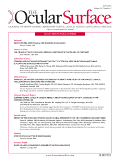
Ocular Surface
Pioneering Discoveries for Visionary CareOcular Surface, published by Elsevier, stands at the forefront of ophthalmology research, with a notable Impact Factor reflecting its significant contribution to the field. As a vibrant platform for disseminating cutting-edge findings, this journal has achieved Q1 ranking in the Ophthalmology category as of 2023, placing it amongst the top-tier journals globally, specifically ranking 4th out of 137 in Scopus with an impressive 97th percentile. Spanning across the years from 2003 to 2024, Ocular Surface focuses on advancing knowledge in areas such as ocular pathology, therapy, and surgical interventions. While the journal is not open access, it provides invaluable insights and empirical data essential for researchers, professionals, and students dedicated to improving ocular health. With an address rooted in Amsterdam, Netherlands, this esteemed journal continues to enrich the global conversation in ophthalmology.